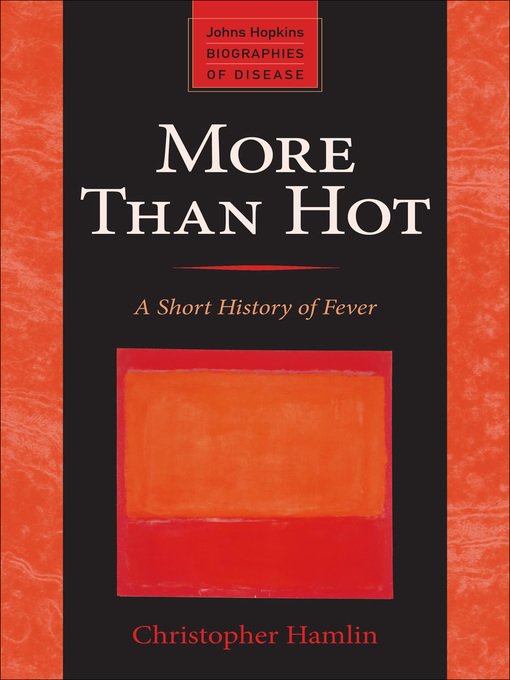A conceptual and cultural history of fever, a universally experienced and sometimes feared symptom.
Winner of the CHOICE Outstanding Academic Title of the Choice ACRL
Christopher Hamlin's magisterial work engages a common experience—fever—in all its varieties and meanings. Reviewing the representations of that condition from ancient times to the present, More Than Hot is a history of the world through the lens of fever. The book deals with the expression of fever, with the efforts of medical scientists to classify it, and with fever's changing social, cultural, and political significance.
Long before there were thermometers to measure it, people recognized fever as a dangerous, if transitory, state of being. It was the most familiar form of alienation from the normal self, a concern to communities and states as well as to patients, families, and healers.
The earliest medical writers struggled for a conceptual vocabulary to explain fever. During the Enlightenment, the idea of fever became a means to acknowledge the biological experiences that united humans. A century later, in the age of imperialism, it would become a key element of conquest, both an important way of differentiating places and races, and of imposing global expectations of health. Ultimately the concept would split: "fevers" were dangerous and often exotic epidemic diseases, while "fever" remained a curious physiological state, certainly distressing but usually benign. By the end of the twentieth century, that divergence divided the world between a global South profoundly affected by fevers—chiefly malaria—and a North where fever, now merely a symptom, was so medically trivial as to be transformed into a familiar motif of popular culture.
A senior historian of science and medicine, Hamlin shares stories from individuals—some eminent, many forgotten—who exemplify aspects of fever: reflections of the fevered, for whom fevers, and especially the vivid hallucinations of delirium, were sometimes transformative; of those who cared for them (nurses and, often, mothers); and of those who sought to explain deadly epidemic outbreaks. Significant also are the arguments of the reformers, for whom fever stood as a proxy for manifold forms of injustice.
Broad in scope and sweep, Hamlin's study is a reflection of how the meanings of diseases continue to shift, affecting not only the identities we create but often also our ability to survive.

